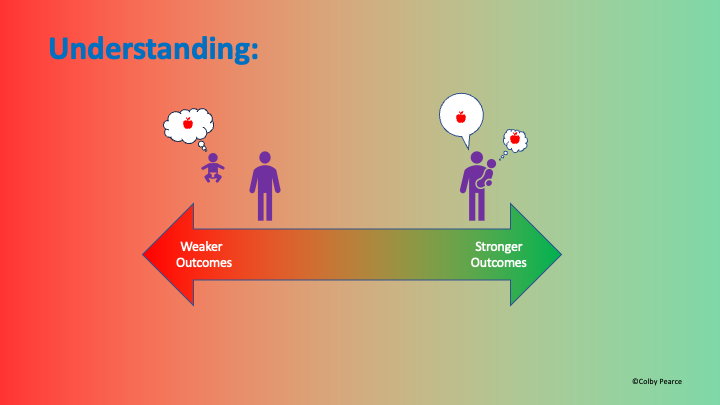
U: Understanding
In a conventional, nurturing care environment we spend a lot of time thinking about the infant, including their needs and experience, and responding to these. We become expert at attending to subtle cues the infant gives off through their vocalisations and gestures. We also draw on our knowledge of what an infant needs and respond to those needs; such as our understanding that infants need regular feeding, interactive playtime, nappy checks, and sleep. We perform these caregiving rituals sensitively, accurately, and, in many instances, proactively. And the infant experiences that their needs are understood, important, and they will be responded to.
In addition, we talk to our babies. We talk to them about their experience. We talk with their voice, until they have their own voice and the words that represent their experience. Incidentally, we often do the same with our pets (though not with any expectation that they will eventually talk back to us).
Further, we share their emotions. When they are sad, we are sad too. When they are happy, we are happy also. Altogether and in time, in a conventional, nurturing care environment it is the infant’s experience that we understand them in our emotions, our words, and our actions. These aspects of conventional caregiving support trust in others, self-worth, a range of genuine emotion, and verbal expression.
Where caregiving is hampered by mental health challenges, substance misuse, relational difficulties, and/or poor parenting knowledge, the infant’s experience and needs are poorly understood or responded to in such a way as it leaves the child unsure of whether their experience and needs are understood and important. This has profound impacts on their emerging self-worth, modes of expression, and consideration of the experience of others.
Interventions that begin to address the impacts of feeling poorly understood need to focus on their experience of being heard through congruent emotion, sensitive words, and responsive actions.
Click here to enter the next page in the module.
Click here to purchase a PDF Handbook for this module.
